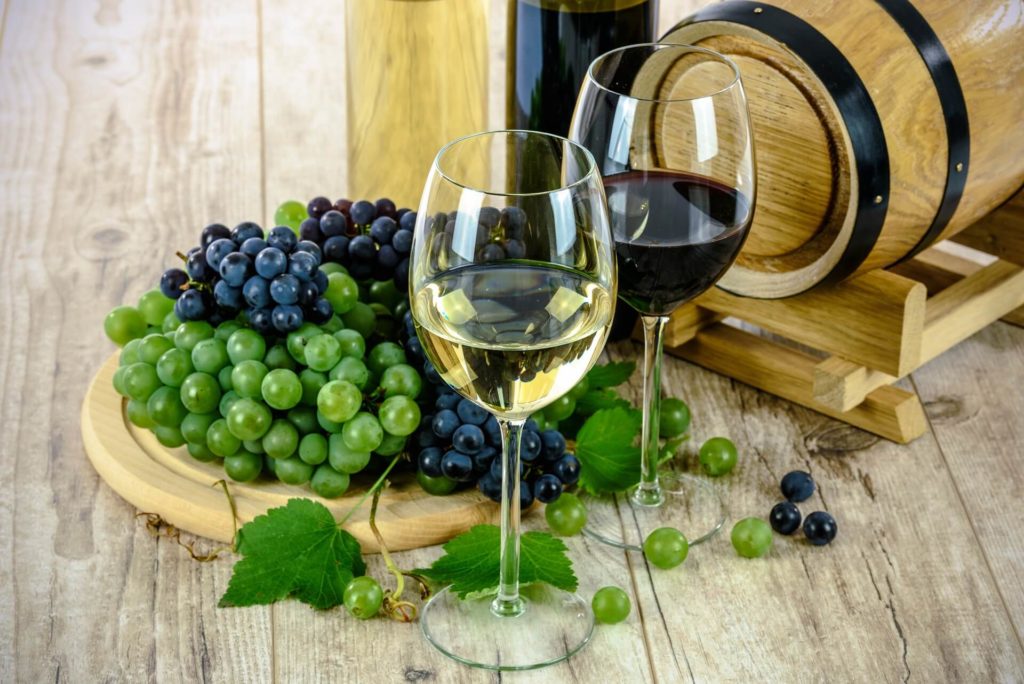Niagara Falls & Around: Wine Tasting Tours

Beyond the thundering cascades of Niagara Falls lies a treasure trove for wine connoisseurs and enthusiasts. The Niagara region, graced with a unique microclimate and rich soils, has emerged as one of the most notable wine-producing areas in North America. Whether you’re a seasoned sommelier or a curious traveler, the wine-tasting tours around Niagara offer a tantalizing journey for your taste buds.
Table of Contents
Featured Wine Tasting Tours
What is a Wine Tasting Tour?
A wine tasting tour is an organized journey that takes participants through vineyards and wineries, allowing them to sample, understand, and appreciate various wines. These tours are curated by experts to give participants an immersive experience, diving deep into the world of viticulture (the cultivation of grapevines) and oenology (the study of wines).
Why is it Special?
- Educational Experience: Beyond just tasting wine, these tours educate participants about the grape-growing process, the art of winemaking, and the nuances of different wine varieties.
- Sensory Delight: Wine tasting isn’t just about the palate; it’s a multisensory experience. From observing the wine’s hue, swirling it to release its aromas, to finally tasting its complexities, it’s a journey of discovery for the senses.
- Connection to the Land: Walking through the vineyards, one can appreciate the terroir (the environment in which the wine is produced, including factors like soil, topography, and climate). This connection enhances the understanding and appreciation of each sip.
- Exclusive Access: Many wineries release limited-edition or winery-only vintages that aren’t available in stores. On a wine tasting tour, you often get to sample and purchase these exclusive wines.
How to Taste Wine: Quick Guide
Tasting wine is a ritual that engages multiple senses. More than just sipping, it involves observing, smelling, and savoring to truly appreciate the complexities within a glass. Here’s a step-by-step guide to help you embark on this sensory adventure:
-
Choose the Right Glass: A proper wine glass has a broad bowl and a narrower opening, allowing you to effectively swirl and capture the aromas. Red wines usually require larger glasses than whites due to their complex bouquets.
-
Pour the Wine: Don’t fill the glass. Pouring just a small amount, typically until the widest part of the bowl, ensures the wine has enough space to be swirled.
-
Observe the Color: Before swirling, hold the glass against a white background. The wine’s color can provide insights into its age and grape variety. Reds often lighten as they age, while whites can darken.
-
Swirl the Wine: Swirling aerates the wine, helping release its aromas. Place the base of the glass on a flat surface and move it in a circular motion. This also allows you to observe the “legs” or “tears” – the droplets that form on the inside of the glass, which can indicate the wine’s alcohol content or sugar level.
-
Smell the Wine: Place your nose inside the glass and inhale deeply. Try to identify different aromas. Wines can offer a plethora of scents, from fruits and flowers to spices, earth, or wood. The aromas can give you a hint about the grape variety, the wine’s origin, and even the winemaking techniques used.
-
Take a Sip: Instead of gulping down, let the wine flow slowly over your palate. This ensures it reaches all taste bud areas. Try to identify the flavors. Are they consistent with the aromas you detected?
-
Analyze the Structure:
- Sweetness: A wine is perceived as sweet if it has residual sugars. This shouldn’t be confused with fruity flavors.
- Acidity: Wines with high acidity feel crisp and fresh in your mouth.
- Tannins: Tannins, commonly found in red wines, give a puckering or drying sensation.
- Body: This refers to the weight or fullness of the wine in your mouth, influenced by factors like alcohol content, tannins, and sugar.
-
Consider the Finish: After swallowing, take a moment to consider the aftertaste or the “finish.” High-quality wines often have a lingering finish, allowing you to savor their flavors long after they’ve been consumed.
-
Cleanse Your Palate: If you’re tasting multiple wines, cleanse your palate between each with some plain bread or water. This ensures that lingering flavors from one wine don’t interfere with the next.
-
Make Notes: Whether you’re a novice or an expert, making notes helps you remember your impressions and preferences. Note the wine’s appearance, aromas, taste, and finish. Over time, this can help you recognize patterns in your preferences.
Exploring the Rich History and Tradition of Niagara’s Wineries
Niagara, often lauded for its iconic waterfalls, has quietly and steadily etched its name in the annals of wine-making history. Beyond its cascading waters, the region boasts a tapestry of vineyards, each narrating tales of heritage, craftsmanship, and evolution. As we embark on this journey through Niagara’s wineries, we discover the vibrant history and time-honored traditions that shape its wines’ unique character.
Niagara’s Wine-making Odyssey
The foundation of Niagara’s wine history is rooted in the late 18th century when loyalists, migrating northward following the American Revolution, brought with them the first grapevines. However, it wasn’t until the late 20th century that the region began gaining recognition on the global wine stage. The establishment of Inniskillin in 1975 marked a pivotal moment, setting the stage for Niagara’s future as a premier wine-producing region. The success of their ice wines on the international platform paved the way for other vineyards to explore and experiment.
Heritage Vineyards: Preserving the Past
Several vineyards in Niagara stand as testaments to the region’s rich wine legacy. Estates such as the Henry of Pelham Family Estate Winery, with its roots tracing back to the 19th century, serve as a bridge between the past and present. These heritage vineyards have meticulously preserved old vines, some of which are over a century old, resulting in wines that offer a profound depth of character and complexity. They stand as living museums, providing insights into the region’s evolution over time.
Traditional Winemaking Techniques: An Artful Craft
Niagara wineries, while embracing modernity, continue to honor time-tested winemaking techniques that have been passed down through generations. From hand-harvesting grapes to ensure optimum ripeness to the use of gravity-flow systems that gently transfer wine at various production stages, the emphasis is on minimal intervention.
-
Oak Aging: Many Niagara wineries continue the tradition of aging wines in oak barrels, allowing them to develop intricate flavors and aromas over time. This process imparts the wine with nuances of vanilla, spice, and toast, enriching its overall profile.
-
Sur Lie Aging: A technique borrowed from French traditions, some Niagara wineries practice sur lie aging for their white wines, especially Chardonnays. Here, wines are aged on their yeast sediments, adding richness, complexity, and a creamy texture.
-
Ice Wine Production: Niagara’s claim to global fame, the traditional technique of making ice wine, involves harvesting grapes naturally frozen on the vine. This painstaking process results in a wine that’s lusciously sweet, yet impeccably balanced, capturing the essence of Niagara’s winters.
Unveiling the Secrets Behind World-Class Wine Production in Niagara
Nestled beside the shimmering waters and thundering falls, Niagara’s vineyards are a testament to nature’s alchemy and human craftsmanship. It’s not by sheer chance that this region produces some of the world’s most acclaimed wines. The secrets behind Niagara’s vinicultural prowess are a blend of its distinctive viticulture, a mosaic of grape varieties, and the profound influence of terroir.
Viticulture in Niagara: Nature Meets Nurturing
Viticulture, the science and cultivation of grapevines, plays an instrumental role in Niagara’s wine success story. The region’s unique microclimate, tempered by the Great Lakes and the Niagara River, provides an extended growing season. While warm summers allow the grapes to ripen to perfection, the chilly winters introduce the possibility of exquisite ice wines.
Local viticulturists have honed their skills over decades, understanding the nuances of their land, and adopting sustainable practices that respect nature’s rhythm. Techniques like canopy management, where leaves are pruned to ensure optimal sunlight and air circulation, and precision irrigation showcase the harmonious dance between nature’s offerings and human intervention.
A Mosaic of Grape Varieties: The Essence of Diversity
Niagara’s vineyards are a vibrant tapestry of grape varieties, each adding its unique note to the region’s wine symphony. While the region’s ice wines, predominantly from Vidal grapes, have gained global acclaim, there’s a plethora of other varieties that thrive here:
- Reds: Cabernet Franc, Merlot, and Pinot Noir are some of the prominent red grape varieties, producing wines that range from light and fruity to deep and structured.
- Whites: Chardonnay and Riesling have found a hospitable home in Niagara, with the latter producing both dry and sweet wines with racy acidity.
- Hybrids: Apart from the traditional Vinifera grapes, Niagara also experiments with hybrid varieties like Baco Noir and Seyval Blanc, further expanding its wine repertoire.
Terroir’s Profound Influence: The Soul of the Wine
Terroir, a French term encompassing soil, topography, and climate, shapes a wine’s character in indelible ways. In Niagara, the undulating landscape, rich loamy soils, and climatic variances across the region ensure that wines, even of the same variety, possess distinct characteristics.
The mineral-rich soils, remnants from ancient glaciers, contribute to the wines’ aromatic profile and depth of flavor. The varying elevations and exposures of different vineyards further influence grape maturity and taste. This intimate relationship between the land and the grape ensures that each bottle of Niagara wine is not just a beverage but a narrative of its origin.
Niagara Best Wineries List
- 13th Street Winery
- Angels Gate Winery
- Atlantis Wines
- Konzelmann Estate Winery
- Lailey Winery
- Magnotta Winery
- Marynissen Estates Winery
- Niagara Brewing Company
- Niagara Distillery
- Niagara Monastery Cellars
- Niagara Oast House Brewers
- Peller Estates Winery and Restaurant
- Ravine Vineyard Estate Winery
- Reif Estate Winery
- Riverview Cellars Estate Winery
- Rockway Vineyards
- The Hare Wine Co.
- Trius Winery and Restaurant
- Two Sisters Vineyard
- Vineland Estates Winery
- Wayne Gretzky Estates Winery and Distillery

Hey there, adventure seekers! I’m Nicole Valerio, your personal guide to the awe-inspiring world of Niagara Falls. With a background in Environmental Science and a pen that never rests, I’m on a mission to take you behind the mist and into the heart of one of Earth’s most spellbinding natural wonders. Join me on this unforgettable journey as we explore every nook and cranny, capturing moments that will leave you in awe. Get ready to be spellbound by the power and beauty of Niagara Falls!
